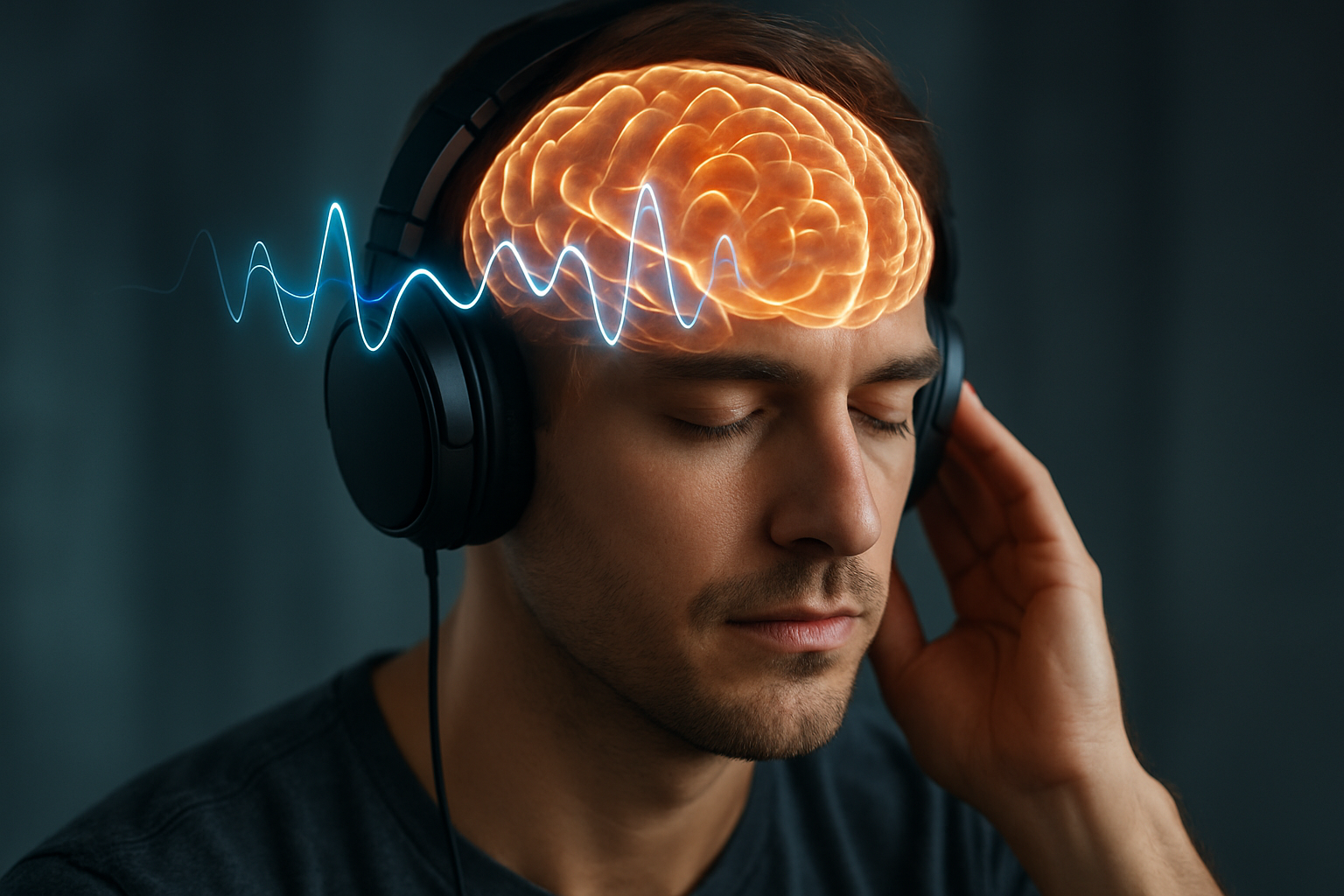Binaural Beats: Tuning Brain Waves for Enhanced Wellness
Can sound frequencies truly influence our mental state and overall well-being? This intriguing question has led researchers to explore the potential of binaural beats, a fascinating auditory phenomenon that's gaining traction in the wellness world. As we delve into this cutting-edge topic, prepare to discover how these subtle sound waves might just be the key to unlocking improved focus, reduced stress, and better sleep.

The Science Behind Binaural Beats
At its core, the concept of binaural beats relies on the brain’s ability to perceive and respond to auditory stimuli. When two tones with slightly different frequencies are presented separately to each ear, the brain perceives a third tone – the binaural beat – at a frequency equal to the difference between the two original tones. For example, if a 440 Hz tone is played in one ear and a 444 Hz tone in the other, the brain perceives a 4 Hz binaural beat.
This phenomenon was first discovered in 1839 by Heinrich Wilhelm Dove, a Prussian physicist and meteorologist. However, it wasn’t until the late 20th century that researchers began to explore its potential applications in cognitive enhancement and therapeutic interventions.
Brainwave Entrainment and Its Potential Benefits
The key mechanism behind the proposed effects of binaural beats is brainwave entrainment. This process involves synchronizing brainwave activity to match the frequency of the perceived binaural beat. Different brainwave frequencies are associated with various cognitive states:
-
Delta waves (0.5-4 Hz): Deep sleep and relaxation
-
Theta waves (4-8 Hz): Meditation and creativity
-
Alpha waves (8-13 Hz): Relaxed alertness and focus
-
Beta waves (13-30 Hz): Active thinking and problem-solving
-
Gamma waves (30-100 Hz): Peak cognitive performance and insight
By presenting binaural beats at specific frequencies, researchers hypothesize that it may be possible to induce desired cognitive states, potentially leading to improvements in focus, relaxation, and even sleep quality.
Current Research and Emerging Evidence
While the concept of binaural beats is intriguing, it’s essential to examine the current state of scientific evidence. Several studies have explored the potential benefits of binaural beat exposure, with mixed but promising results.
A 2019 systematic review published in the journal Psychological Research analyzed 22 studies on the effects of binaural beat exposure. The review found some evidence supporting the use of binaural beats for enhancing attention, memory, and mood. However, the authors noted that more rigorous research is needed to establish conclusive benefits.
Another study published in Frontiers in Human Neuroscience in 2020 investigated the effects of binaural beats on anxiety levels. The researchers found that participants exposed to theta-frequency binaural beats experienced reduced anxiety compared to those in a control group.
Applications in Wellness and Performance Enhancement
Despite the need for further research, binaural beats have gained popularity in various wellness and performance-enhancement contexts. Some potential applications include:
-
Stress reduction and relaxation: Theta-frequency binaural beats may help induce a meditative state and reduce anxiety.
-
Improved focus and concentration: Alpha-frequency beats are often used to enhance attention and cognitive performance.
-
Sleep aid: Delta-frequency binaural beats might assist in promoting deeper, more restful sleep.
-
Creativity enhancement: Some users report increased creative thinking when listening to theta or alpha-frequency beats.
It’s important to note that individual responses to binaural beats can vary, and more research is needed to fully understand their efficacy across different populations and contexts.
Integrating Binaural Beats into Your Wellness Routine
For those interested in exploring the potential benefits of binaural beats, there are several ways to incorporate them into a wellness routine:
-
Use dedicated binaural beat apps or audio tracks designed for specific purposes (e.g., relaxation, focus, sleep)
-
Experiment with different frequencies to find what works best for you
-
Combine binaural beat listening with other relaxation techniques, such as deep breathing or meditation
-
Start with short listening sessions (10-15 minutes) and gradually increase duration as desired
Fascinating Facts About Binaural Beats and Brain Waves
-
The human brain contains approximately 86 billion neurons, each capable of firing 200 times per second
-
Binaural beats are most effective when the carrier tones are below 1000 Hz
-
The discovery of different brainwave patterns (alpha, beta, etc.) dates back to the 1920s
-
Some studies suggest that binaural beats may influence neurotransmitter production, potentially affecting mood and cognitive function
-
The use of sound for healing and altered states of consciousness has roots in ancient traditions across various cultures
As we continue to unravel the mysteries of the human brain, binaural beats offer an intriguing glimpse into the potential for non-invasive cognitive enhancement. While more research is needed to fully understand their effects and optimal applications, this innovative approach to auditory stimulation represents an exciting frontier in the quest for improved mental well-being and cognitive performance. As with any wellness practice, it’s essential to approach binaural beats with an open mind, balanced expectations, and a commitment to overall health and self-care.




